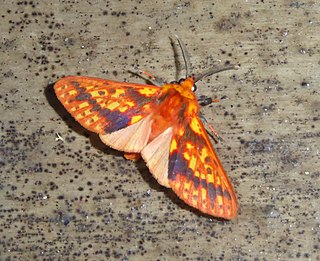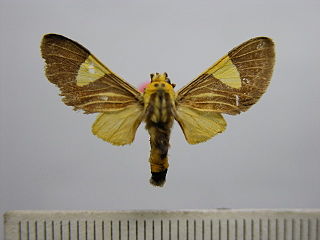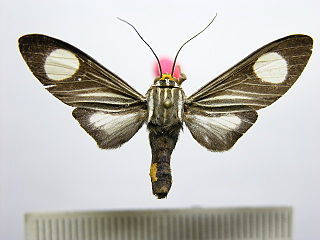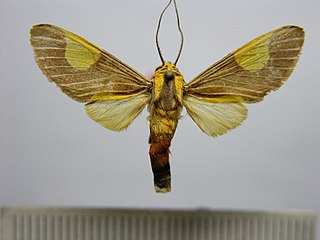
The Rothschild family is a wealthy Jewish family originally from Frankfurt that rose to prominence with Mayer Amschel Rothschild (1744–1812), a court factor to the German Landgraves of Hesse-Kassel in the Free City of Frankfurt, Holy Roman Empire, who established his banking business in the 1760s. Unlike most previous court factors, Rothschild managed to bequeath his wealth and established an international banking family through his five sons, who established businesses in London, Paris, Frankfurt, Vienna, and Naples. The family was elevated to noble rank in the Holy Roman Empire and the United Kingdom. The family's documented history starts in 16th century Frankfurt; its name is derived from the family house, Rothschild, built by Isaak Elchanan Bacharach in Frankfurt in 1567.

Baron Rothschild, of Tring in the County of Hertfordshire, is a title in the Peerage of the United Kingdom. It was created in 1885 for Sir Nathan Rothschild, 2nd Baronet, a member of the Rothschild banking family. He was the first Jewish member of the House of Lords not to have previously converted to Christianity. The current holder of the title is Jacob Rothschild, 4th Baron Rothschild, who inherited the title in 1990.

Nathaniel Charles Rothschild, known as "Charles", was an English banker and entomologist and a member of the Rothschild family. He is remembered for The Rothschild List, a list he made in 1915 of 284 sites across Britain that he considered suitable for nature reserves.
Purpura fulminans is an acute, often fatal, thrombotic disorder which manifests as blood spots, bruising and discolouration of the skin resulting from coagulation in small blood vessels within the skin and rapidly leads to skin necrosis and disseminated intravascular coagulation.
Acne fulminans is a severe form of the skin disease, acne, which can occur after unsuccessful treatment for another form of acne, acne conglobata. The condition is thought to be an immunologically induced disease in which elevated level of testosterone causes a rise in sebum and population of Cutibacterium acnes bacteria. The increase in the amount of C acnes or related antigens may trigger the immunologic reaction in some individuals and lead to an occurrence of acne fulminans. In addition to testosterone, isotretinoin may also precipitate acne fulminans, possibly related to highly increased levels of C acnes antigens in the patient's immune system. Acne fulminans is a rare disease. Over the past several years, fewer cases of this disease have occurred, possibly because of earlier and better treatment of acne. Approximately 100 patients with acne fulminans have been described.
The Madagascan large free-tailed bat is a species of bat in the family Molossidae. It is found in Democratic Republic of the Congo, Kenya, Madagascar, Malawi, Rwanda, South Africa, Tanzania, Zambia, and Zimbabwe. Its natural habitats are dry savanna and moist savanna.

Asura is a genus of moths in the subfamily Arctiinae erected by Francis Walker in 1854.

Melese is a genus of moths in the family Erebidae. The genus was erected by Francis Walker in 1854.

Rhipha is a genus of moths in the family Erebidae. The genus was erected by Francis Walker in 1854.

Symphlebia is a genus of moths in the family Erebidae. The genus was erected by Felder in 1874.

Trichromia is a genus of moths in the family Erebidae erected by Jacob Hübner in 1819. The members of this genus are largely indigenous to South America.

Macroglossum is a genus of moths in the family Sphingidae. The genus was erected by Giovanni Antonio Scopoli in 1777.
The Rothschild family is a European family of German Jewish origin that established European banking and finance houses from the late eighteenth century.

Rhipha flavoplagiata is a moth in the family Erebidae. It was described by Walter Rothschild in 1911. It is found in Colombia.

Rhipha luteoplaga is a moth in the family Erebidae. It was described by Walter Rothschild in 1922. It is found in Brazil.

Rhipha niveomaculata is a moth in the family Erebidae. It was described by Walter Rothschild in 1909. It is found in Peru.

Rhipha persimilis is a moth in the family Erebidae. It was described by Walter Rothschild in 1909. It is found in Costa Rica, French Guiana, Ecuador and Peru.
Rhipha pulcherrima is a moth in the family Erebidae. It was described by Walter Rothschild in 1935. It is found in Brazil.
Rhipha subflammans is a moth in the family Erebidae. It was described by Walter Rothschild in 1909. It is found in Brazil and Colombia.
Symphlebia fulminans is a moth in the family Erebidae first described by Walter Rothschild in 1910. It is found in Peru and Venezuela.












